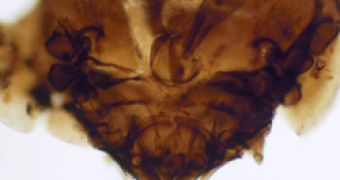The glory and the decadence of the mighty civilizations could now be tracked by ... dung!
A French-British-American team has found a method to assess the rise and fall the ancient Inca empire by investigating tiny mite preserved in the mud at the bottom of a sacred Peruvian lake.
Counting the number of fossilized mites linked with animal excrement could offer an insight for archaeologists, epidemiologists, geologists, historians, geographers and even global climate researchers investigating climatically sensitive areas of the world.
This method comes with valuable information about the poorly-understood rise of the Inca empire, one of the most advanced pre-European civilizations in America, but which had no written historical records, did not know the wheel and completely destroyed by Spanish conquistadors in the first half of the 16th century.
The team made up by palaeoecologists Dr Michael Frogley (University of Sussex), Dr Alex Chepstow-Lusty (CNRS, Montpellier) and anthropologist Professor Brian Bauer (University of Illinois at Chicago) showed the fossil mites were associated with zones of moist grassland and pasture adequate for grazing animals.
The mite fossils were present in unusually high numbers in mud samples from the sacred lake of Maracocha, near Cuzco in highland Peru, located at the center of the ancient Inca empire.
Inca's transport network employed lengthy llama caravans to transport the State's growing wealth. The animals' droppings were a rich source of food for the mites.
Variations in the fossil mites' abundance sampled in the lake muds were linked to an increased llama numbers on the main trans-Andean trading pathways that passed through Marcacocha during the peak of the Inca empire, and the numbers of native animals and people dropped sharply after the arrival of the Spanish.
Mite numbers recovered again in the late 16th and early 17th centuries on the base of the Old World domesticated animals, like sheep, goats, horses and cattle, with an interruption in the early 1700s due to a plague outbreak, decimating rural populations.
Historical records matched with the fossil mite analyses, that's why the method could be also applied for uncharted periods of pre-Incan history, with no written records. "Until now, it has been very difficult to find a technique that can chart the changing patterns of trade or livestock across a landscape. This new mite methodology could have further, more wide-ranging applications for understanding all sorts of cultural ups and downs. Even the smallest and most mundane of animals, such as excrement-eating mites, can provide a window onto the calamitous impact that the Europeans had when they settled in the New World." said Dr. Frogley.

 14 DAY TRIAL //
14 DAY TRIAL //